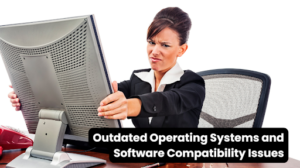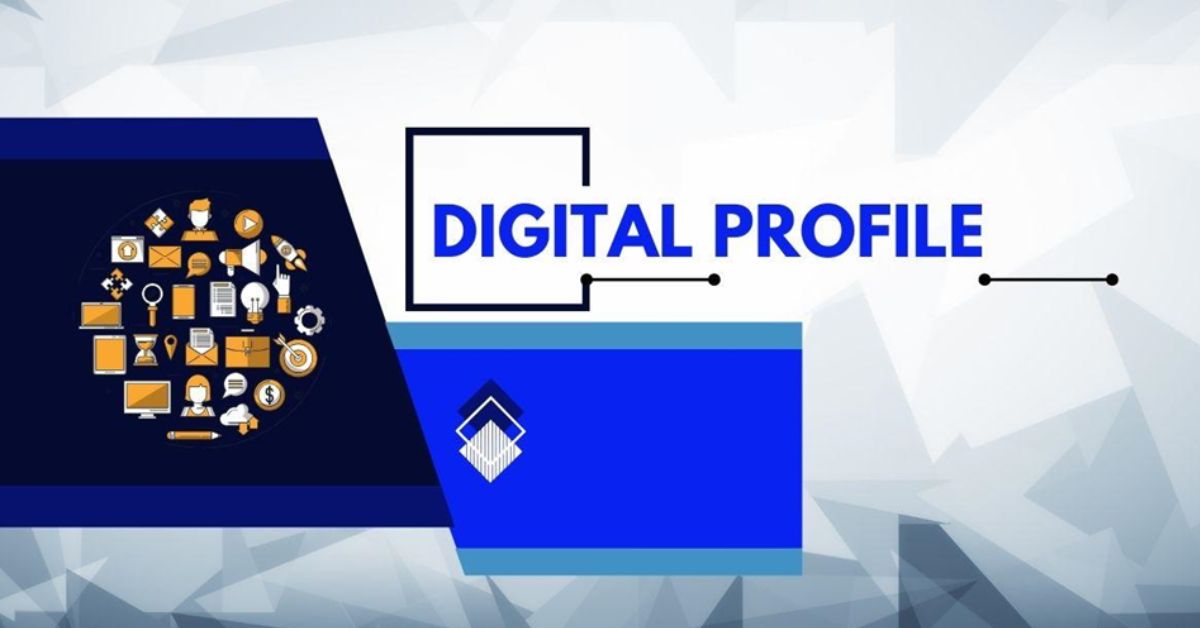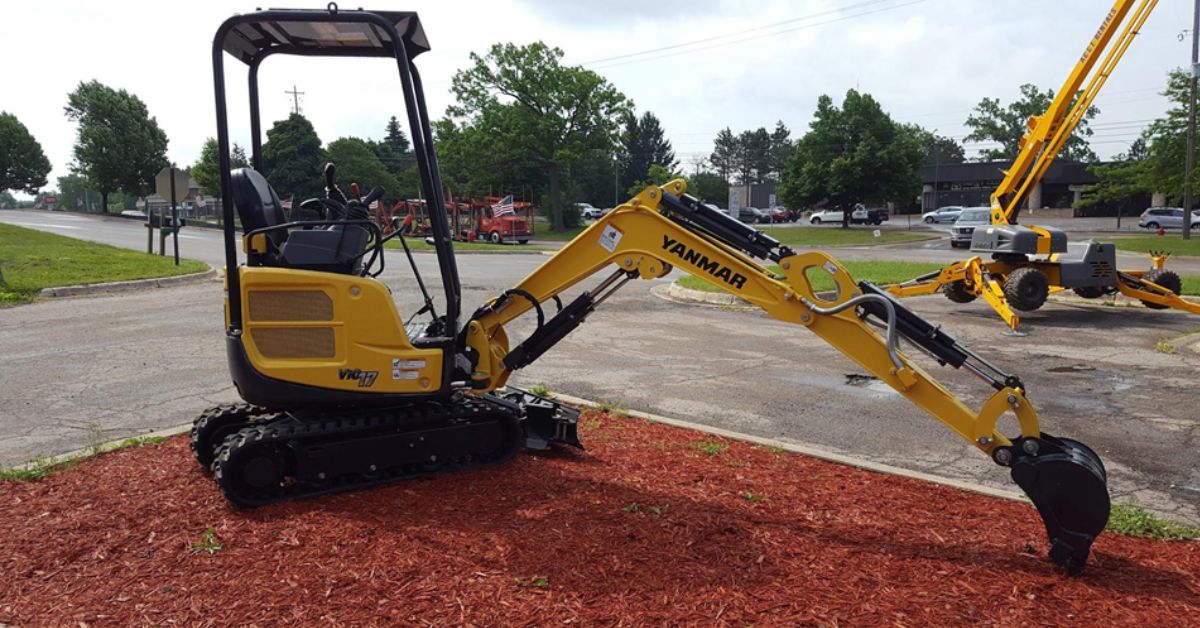BUSINESS
When Should You Upgrade Your Business Servers?

Perhaps your business is experiencing slow, unreliable servers or the inability to function at full productivity. With business operations hinging on its servers, the proper time to upgrade is important.
If outdated and overwhelmed, it can lead to losses, security issues, and less efficiency which affects customer satisfaction and impacts employee productivity. This guide explains the common signs that show that an upgrade is necessary, to keep your business up and running smoothly and securely.
Your Server Is No Longer Supported
Always have a periodical check on your servers as they might be running on old hardware or software. Sometimes manufacturers as well as the providers of the operating system typically end their support for older products.
That implies no more updates, new security patches, and minimal or no technical support. In such a case, servers remain prone to malware and cyber-attacks which can jeopardize your business data.
An aggressive move to prepare for an upgrade when support will be discontinued is to regularly check with your server’s manufacturer or software provider regarding end-of-life timelines. In such situations, prioritize supermicro refurbished servers that can help ensure continued security and compatibility when official support ends, maintaining operational stability and reducing potential risks.
Slow Performance

As the business grows, so will the data, and therefore, there will be an upsurge in the number of data being processed on the servers. If your applications now take a lot of time to open, if your backup processes take longer, or if it is taking longer for data retrieval, then the servers could be bogging under the workload.
Slow server performance significantly impacts productivity since employees will have to wait longer for their files to open, for databases to open, or for critical applications to run.
Server hardware could have limited capabilities, and only upgrading to a specific component can offer temporary relief. Regular performance dips are usually an indication that your servers are overstretched with what they can currently manage. Moving to newer and more powerful surplus servers configurations can bring back speed to an optimal level, help meet aspirations for growth, and preclude costly downtimes.
Higher Maintenance and Downtime Costs
Older servers have to be frequently repaired and serviced, which can quickly eat into your IT budget, rendering it unavailable for more strategic investments. Broken refurbished servers also tend to collapse without any warning, causing significant downtime. Unscheduled downtimes may hurt business revenues, and customer trust may be damaged by the service disruptions. Normal operation hassles lead to frustrated employees and clients due to stoppages.
In case the maintenance costs are rising or when you encounter frequent shutdowns, then this may present an opportunity to transition to new servers with fewer chances of failure, thus saving more in terms of cost and reliability. Newer servers come with warranties and technical support; therefore, these reduce the cost of maintenance and are less uncertain.
Storage Needs Have Increased

As your business grows, so will its data storage needs. Large volumes of customer data, project files, multimedia content, and databases can fill up server storage quickly. Once the storage space reaches capacity, server performance begins to degrade and even data backup might take longer or completely fail. This becomes especially a huge problem if your business depends on high-capacity storage for analytics, large databases, or large digital assets.
There could be a possibility of adding extra storage space in existing servers for now, but if the need for storage is also increasing with each passing time then an upgrade might be better.
Modern servers are always available with relatively higher storage capacities and quicker access, which ensures that your team works without any hindrances due to storage.
Security Risks Are Rising
Due to the number of cyber attacks, it is very critical to secure business servers. Older servers are deprived of most of the many sophisticated security features found in newer pieces of equipment. Updates to older operating systems are no longer available in some cases, which can create holes in the system through which breaches of security can occur. Your data can get compromised at times with security breaches, which might expose some sensitive business information, customer data, and financial records.
At times, the only upgrade possible is for new refurb servers to offer the latest new security features like advanced encryption, automated backups, and integrated firewall protection, just to mention a few. At around the same time, new servers more often than not support the latest security software, so your company remains protected from emerging new threats.
Outdated Operating Systems and Software Compatibility Issues

Your applications might be running on an obsolete operating system, which reduces your ability to add new software and applications. Often, software vendors will release updated versions of applications that must be based upon a current operating system to work properly. If the current servers wholesale cannot support these updates, you’re probably missing out on important features and security enhancements that can impact your team’s performance.
With the current modern used rack servers, you can be sure that it has installed software that is on par with modern levels, hence giving your business the promise of using new functions in a quest to stay ahead of the times.
Compatibility issues, besides ensuring timely up-grading, also make collaboration among departments as the organization introduces newer and better technologies into the business.
Expanding Business Needs

When a business continues growing, the demand may increase, and therefore, it is essential to upgrade such refurb servers to flexible and scalable server infrastructure.
It means that the old servers may become overstrained with a higher number of customers or applications or higher processing power, which may even demand more sophisticated software integration. Businesses rapidly growing may realize that existing servers are no longer capable of handling new users, applications, or customer traffic, resulting in bottlenecks.
A server upgrade will help your business match the IT capabilities in terms of its expansion goals. Scalable server solutions ensure that you have the right infrastructure to absorb future growth without trading off any performance, thus giving comfort that your IT infrastructure will keep up with your business ambitions.
Energy Efficiency and Environmental Impact
This makes older servers usually less energy-efficient, with a need for more power and a greater generation of heat in comparison to their modern versions. Not only is that quite expensive in electricity terms, but the environmental footprint of your business can also grow exponentially.
More and more companies are taking steps towards using more environmentally friendly resources. Upgrading to energy-efficient Dell refurbished servers can be an efficient way to accomplish this.
New servers are designed to be energy-efficient; their latest power supplies, for instance, tend to have more efficiency and waste fewer amounts of energy compared with traditional models. Power consumption cuts form a step toward reducing the cost of running your operations as well as showing commitment to sustainable business practices.
Enhanced Virtualization Support and Cloud Integration

Many organizations transition towards hybrid environments, where a combination of on-premises servers along cloud-based services are being used. Such an environment is flexible and scalable and allows savings in cost.
Cloud integration can sometimes be difficult because of older supermicro refurbished; the older hardware and software might lack compatibility for smooth integration into the cloud, or vice versa, to support virtualization purposes.
They can be made easier and much upgraded through the use of modern servers that support virtualization as well as cloud integration. This can work out to be flexible for the construction of a hybrid IT infrastructure, making it possible to use resources more resourcefully, manage data better, and assure employees have access to data across locations.
Readying for Remote and Flexible Work

More and more employees work from home and remote access to data and applications will become necessary. Older servers can be weak in supporting that type of remote connection, providing slower speeds in accessing data and applications and potentially opening the door to security threats. This could be the time to consider upgrading if you’ve proven to be able to maintain or expand your business based on remote work operations.
Most new supermicro refurbished have incorporated secure remote connection and data access support. Therefore, you will not find yourself compromising your data security when handling your distant employees. Putting in some investment in servers that contain the feature of this capability will always be sure to keep your team on the move while being connected and productive wherever they are.
Your Server Is Reaching Its End-of-Life
When servers reach the end of the manufacturer’s life cycle support, they no longer receive any necessary updates. This is inclusive of security patches and technical support. In any business, this poses a significant risk because of outdated software and hardware due to vulnerability to cyber-attacks.
What’s more, the use of unsupported technology will lead to compatibility issues between modern applications and software, and this could limit your ability to add new tools that could help improve business efficiency. By scheduling periodic checks with your supermicro refurbished manufacturer or software provider regarding their timelines for end-of-life products, you’ll be adequately prepared and ready for an upgrade long before the end of the life cycle.
Higher Energy Expenses and Environmental Issues
Older servers are much less energy efficient than state-of-the-art devices, often using more power and having higher heat, which increases the energy cost and may demand more cooling, adding up to utility costs and maintenance.
Energy inefficiency gradually contributes considerably to operational costs and diverts funds that could otherwise have been allocated to more strategic investments within your organization. Switching over to energy-efficient servers could help you cut down on these cost expenses and reduce the overall carbon footprint of your business.
Apart from cost-cutting, business concerns these days have included saving the environment. Newer energy-efficient servers will support greener campaigns, and sustainable activities can easily help enhance brand image and appeal to sensitive, green-conscious clients and business associates.
Strained Resources and Rising Customer Demand

With every increase in demand from customers, scaling up the server becomes necessary. Older servers may not support a large number of users as before, thereby slowing down response times and causing interruptions in services. If the hardware is old or if there is a processing deficiency, applications can cause bottlenecks.
This ultimately impacts client satisfaction and productivity. By investing in scalable server solutions, your infrastructure can flex and grow with your business and so avoid being held captive by growing demands for better performance.
Modern supermicro refurbished machines have been designed to support resource-intensive applications and gigantic numbers of users with high efficiency. An upgrade to a more flexible and powerful server infrastructure will guarantee smooth operations while ensuring improved client satisfaction and providing employees with the tools needed to work effectively.
Transitioning to Virtualization and Hybrid Environments
More organizations are implementing hybrid IT environments these days-that is, combining cloud services with on-premises servers-and older servers get frustrated with issues of compatibility and efficiency. Flexible, scalable resource management comes through virtualization and integration into the cloud, making it easier for businesses to adapt their infrastructures according to the changing needs of their business.
Older hardware, though, may not necessarily have support for virtualization or interoperability between the cloud and other technologies which slows down the transition toward more dynamic and efficient infrastructures.
Supporting a Flexible and Remote Workforce
With the adoption of remote work and hybrid combinations, working businesses have to take appropriate measures for remote access to data and applications with maximum security from anywhere. Older servers, as they hardly provide secure and fast remote access, usually retain slower speeds that pose a security threat.
Such occasions can deteriorate performance and invite cyber breaches; outdated servers might not support secure remote connection protocols, which poses difficulties for employees to access their required sources efficiently.
New servers, for instance, have better support for remote access and secure data sharing, ensuring distributed teams stay productive and connected while working remotely. Secure remote connections are of great concern to a globally distributed team because they prevent data breaches and ensure employees have seamless access to the tools.
The upgrade of the servers to provide modern remote access capabilities improves productivity and demonstrates a good intent for flexible work solutions, which increases staff satisfaction and retains top talent.
Conclusion
Although upgrading the business servers may not always be easy to figure out, identifying these signals will make it pretty easy. Upgrade to your servers: an investment for the future of your business, ensuring that the IT infrastructure in place ensures growth, safety of data, and a trusted solid backbone for all daily operations.
Upgrading can therefore address issues related to slow performance, high maintenance cost, and limitations in storage, all of which will help build an improved, efficient, resilient, and scalable system that will serve your team and customers.
In case any of the situations mentioned above apply to you, it’s advisable to seek consultation from a professional IT expert in conducting an assessment of your needs for servers. Properly planned upgrades of your server can ensure smooth changes that will not disrupt your productivity.
FAQs
How do I know if my server needs an upgrade?
If your server is slow, frequently down, or has reached end-of-life support, it’s likely time for an upgrade.
Why is it risky to keep using an outdated server?
Older servers lack security updates, making them vulnerable to cyber threats, and may be incompatible with new software.
How does server performance affect my business?
Poor server performance can lead to delays, productivity loss, and increased frustration for employees and customers.
BUSINESS
The Ultimate Guide to Financial Stability for Freelancers in the Creative Industry

Freelancing in the creative industry can be both rewarding and challenging. While it offers flexibility and the freedom to pursue your passion, it also requires a keen sense of financial management. Unlike traditional employment, freelancing lacks the safety net of a steady paycheck and employer-provided benefits, making financial stability a critical concern for many creative professionals.
This guide provides comprehensive strategies to help you achieve and maintain economic stability, ensuring a secure and prosperous freelancing career. IRS debt relief can provide essential support for those struggling with tax issues.
Understanding Your Income and Expenses
It is essential to know what your income is and what your expenditures are when laying the foundations of a financially secure future. Due to the nature of freelance work, your income will only sometimes be constant; therefore, you must keep a detailed record of every dollar earned. Conduct daily or weekly income checks using accounting software or Microsoft Excel to check for patterns in your expenses. This will enable you to predict future earnings and then plan your activities in line with those projections.
Examining expenses also helps differentiate between necessary and unnecessary expenses. These are things like rent and other bills, groceries, and transportation costs, while non-essential are things like eating out, going to the movies, and expensive gadgets, respectively. The next step is to allocate the money appropriately so that you can always have the necessities in your life, regardless of whether there is little money in your pocket.
Building an Emergency Fund
Stress and extra costs mean freelancers should always have an emergency fund as part of their financial safety nets. It helps to cover expenses when there are shortages of money or, when there are certain unpredictable disasters like the need for a machine to undergo repairs or when someone in the family has to go to the hospital. It is advisable to set aside between 3-6 months of living expenses in another accessible account that should not be used for other purposes. This fund will give you that comfort that when you are out there doing your work, you are not so worried about the next meal you will eat.
Setting Realistic Financial Goals
Money management is a critical aspect that must be cautiously approached to avoid unnecessary financial pitfalls. Personal financial management objectives may include saving for retirement, paying off a loan, or funding professional improvement. Try to turn all these goals into achievable goals or sub-goals and set deadlines for accomplishing them. It is also necessary to revise and reconsider them according to changes in financial status and career path.
Diversifying Your Income Streams
It is not wise for freelancers to depend on a single source of income to feed their families. Spreading your revenue across different sources may offer more protection and decrease the effect of losing, for instance, a big client. Consider the various options in your niche, including providing skill development sessions, selling downloadable products, and using your creations for a fee. Also, do freelance work or other jobs that you can find on the side that are relevant to your expertise.
Managing Taxes Efficiently
It is worth noting that taxes can be one of the most overwhelming experiences for freelancers. This is why one must fully comprehend the tax laws and develop the right strategies. It is wise to save a few bucks for the taxes as this will help you avoid big bills at the end of the year. You should engage the services of a tax consultant, especially when it comes to matters such as deductions and credits on tax.
Retirement Planning for Freelancers
One of the most significant areas that freelancers neglect is retirement planning since it plays a vital role in determining the financial stability of the freelance worker. Freelancers do not get retirement benefits since they do not work under employers or organizations. Hence, you have to go ahead and open your retirement accounts, such as an IRA or Solo 401(k). Provide to these accounts continually and use assets’ tax-advantaged increase to accumulate a sizable sum of money to use once you retire.
Investing in Your Business
Business investment is crucial for the growth and survival of the business, as it should constantly improve and expand. Budget for training, advertising, and quality equipment for the program to be effective in its delivery. Such investments can improve your skills, attract more clients, and improve the general quality of your projects. Let me reiterate that most money invested today will pay off when the business is established.
Maintaining a Healthy Work-Life Balance
Financial stability not only means a financially secure person but also a balance between work and life. It was established that burnout directly affects productivity, which in turn results in lower income. This means creating a separation between work and other spheres of life, proper time management and organizing the working day, and adequately caring for oneself. Having balance for the body, mind, and soul will increase your health and happiness and increase productivity and imagination.
Conclusion
This means that the question of becoming financially secure as a freelancer in the creative industry is about more than luck but planning, a disciplined and active approach to financial decision-making, and income-generating strategies, including retirement planning. When you know how much money is coming in and how much is going out when saving for an emergency, setting achievable goals and savings, and investing in your business, you can enjoy a comfortable freelancing job. Finances are not a one-time concept but rather a lifelong process.
Therefore, people should have low expectations. Continually assess your strategies and the related plans carefully to ensure they are in harmony with your career and the market. But, if you find the right way, it will help you achieve the freedom and feel the success you always wanted for a freelance creative professional.
BUSINESS
The Role of a Digital Profile in Establishing Professional Credibility

In today’s competitive job market, establishing professional credibility is essential for career growth and new opportunities. Your digital profile is a key component of your reputation, serving as an online portfolio that showcases your skills, achievements, and industry expertise. A well-crafted digital presence not only enhances your visibility but also helps you build trust with potential employers, clients, and professional connections.
Why Professional Credibility Matters
Credibility is what sets professionals apart in any industry. Employers want to hire individuals who demonstrate expertise, reliability, and a commitment to their field. Clients and business partners also prefer working with professionals who have a strong reputation. By optimizing your digital profile, you can position yourself as a knowledgeable and trustworthy expert in your industry.
Building a Strong Foundation with a Complete Profile
The first step in establishing credibility is ensuring that your digital profile is complete and up-to-date. This includes:
- A professional, high-quality headshot
- A compelling headline that summarizes your expertise
- A detailed summary highlighting your career journey and unique value
- A well-structured experience section showcasing key achievements
- Endorsements and recommendations from colleagues, clients, or mentors
A well-organized profile signals that you take your professional presence seriously, making you more attractive to potential employers and business contacts.
Showcasing Thought Leadership
One of the best ways to establish credibility is by demonstrating thought leadership. This involves actively sharing insights, engaging in industry discussions, and contributing valuable content to your professional network.
To enhance your thought leadership:
- Publish articles or blog posts on industry trends, challenges, or innovations
- Share insightful comments on posts from industry leaders
- Participate in relevant discussions within professional groups
- Present case studies or success stories from past projects
By consistently providing value, you reinforce your expertise and build a reputation as a go-to professional in your field.
Leveraging Testimonials and Endorsements
Social proof plays a significant role in credibility. Endorsements from colleagues, supervisors, and clients validate your skills and achievements. Request recommendations from individuals who can speak to your strengths, and offer endorsements in return to strengthen professional relationships.
Well-written testimonials can highlight your problem-solving abilities, leadership skills, or specific accomplishments, giving potential employers or business partners more confidence in your capabilities.
Maintaining a Consistent Online Presence
Credibility is not built overnight—it requires consistency. Keeping your profile updated with recent projects, certifications, and industry involvement ensures that your online presence remains relevant.
To maintain consistency:
- Regularly update your experience and skills section
- Share new certifications, training, or achievements
- Engage with professional content and discussions at least once a week
A stagnant profile can give the impression that you are not actively engaged in your industry, while an active presence shows dedication and continuous learning.
For expert guidance on creating a professional digital profile that enhances credibility, visit Professional Profile.
About Professional Profile
Professional Profile helps professionals craft compelling digital profiles that amplify their online presence and open doors to career opportunities. Through expert advice, tools, and resources, Professional Profile empowers individuals to showcase their skills, build a personal brand, and navigate the digital landscape for career success.
BUSINESS
How Much Should I Pay for a Mini Excavator Rental?

Renting heavy machinery can be a cost-effective solution for construction, landscaping, and utility work. Mini excavators are among the most commonly rented machines due to their versatility, compact size, and ability to handle various tasks. Whether you’re a contractor working on a job site or a homeowner tackling a backyard project, renting a mini excavator can save you time and effort while keeping costs manageable.
But how much should you expect to pay for a mini excavator rental? The cost varies based on several factors, including rental duration, machine size, location, and any additional fees. In this guide, we’ll break down typical rental rates, key factors influencing pricing, and tips for getting the best deal.
What Is a Mini Excavator?
A mini excavator is a smaller version of a full-size excavator, typically weighing between 1 and 10 tons. These machines are designed for digging, trenching, lifting, and demolition in tight spaces where larger equipment would be difficult to maneuver. They are commonly used in:
- Residential and commercial construction – Digging foundations, grading land, and trenching for utility lines.
- Landscaping projects – Creating ponds, removing stumps, and installing drainage systems.
- Roadwork and site preparation – Small-scale excavation for repairs and installations.
- Demolition – Removing small structures, driveways, or concrete slabs.
Because of their compact design, mini excavators are easy to operate and transport, making them a popular choice for rental.
Average Cost to Rent a Mini Excavator
The cost of renting mini excavators varies by location, rental provider, and machine specifications. Below is a breakdown of typical rental prices:
| Rental Duration | Estimated Cost |
| Hourly | $50 – $100 per hour |
| Daily | $200 – $500 per day |
| Weekly | $800 – $2,500 per week |
| Monthly | $2,500 – $6,000 per month |
Additional Costs to Consider
While the base rental price covers the machine itself, you may encounter extra charges, including:
- Delivery and Pickup Fees – If you need the equipment delivered to your site, expect to pay an additional $100-$500 depending on distance.
- Fuel Costs – Most rental agreements require the machine to be returned with a full tank of fuel.
- Damage Waivers or Insurance – Some rental companies offer damage protection plans, which typically add 10-15% to the rental cost.
- Attachment Rentals – Additional tools such as augers, hydraulic breakers, or specialized buckets may cost $50-$200 per day.
- Operator Fees – If you require an experienced operator, expect an additional $50-$100 per hour.
Understanding these costs upfront can help you avoid unexpected expenses when renting mini excavators.
Factors That Affect Mini Excavator Rental Costs
Several factors influence the rental price of mini excavators, including machine specifications, rental duration, and geographic location. Understanding these factors can help you estimate your total cost.
1. Size and Weight of the Machine
Larger mini excavators with higher lifting and digging capacities tend to be more expensive. A 1-3 ton excavator is typically the most affordable, while a 6-10 ton model may cost significantly more to rent.
2. Rental Duration
Short-term rentals (hourly or daily) often have higher per-unit costs than weekly or monthly rentals. If you need an excavator for an extended period, a weekly or monthly rental provides better value.
3. Location
Rental prices vary by region. Urban areas with high demand tend to have higher rental rates compared to rural locations. Additionally, states with a strong construction industry may have more competitive pricing due to increased equipment availability.
4. Rental Company Policies
Different rental providers set their own pricing based on equipment availability, brand reputation, and service quality. Comparing quotes from multiple companies can help you find the best deal.
5. Seasonal Demand
The time of year can impact rental rates. During peak construction seasons (spring and summer), demand for mini excavators is higher, leading to increased rental costs.
Where to Rent a Mini Excavator
There are several options for renting mini excavators, each with its advantages.
1. Local Equipment Rental Companies
Independent rental providers may offer flexible terms and personalized service.
2. National Rental Chains
Companies like United Rentals, Sunbelt Rentals, and Herc Rentals provide a wide selection of equipment with standardized pricing and nationwide availability.
3. Dealership Rentals
Some heavy equipment dealers, such as John Deere and Caterpillar, offer rental programs for their machinery.
4. Online Rental Marketplaces
Websites like BigRentz and EquipmentShare allow renters to compare pricing from multiple suppliers.
Tips for Getting the Best Rental Price
If you’re looking to rent mini excavators while staying within budget, these tips can help:
1. Get Multiple Quotes
Compare prices from at least three rental providers to find the most competitive rate.
2. Book in Advance
Demand for equipment rentals is higher in warmer months. Reserving your rental early can help you secure lower rates.
3. Choose the Right Size
Renting a larger excavator than necessary will increase costs. Make sure you select the right size for your project.
4. Look for Promotions or Discounts
Some rental companies offer discounts for long-term rentals or repeat customers.
5. Understand the Rental Agreement
Be aware of additional fees, such as late return charges or maintenance costs.
Renting vs. Buying: Which Is the Better Option?
For businesses and individuals who frequently use mini excavators, deciding whether to rent or buy is an important financial consideration.
When Renting Is the Better Choice:
- You only need the excavator for a short-term project.
- You want to avoid maintenance and repair costs.
- You lack storage space for heavy equipment.
- You need different models for different jobs.
When Buying Is the Better Choice:
- You frequently use an excavator for ongoing projects.
- You want to invest in equipment that adds value to your business.
- You plan to customize or modify the excavator.
- You want to avoid long-term rental costs.
For most occasional users, renting is the more cost-effective option. However, businesses that require an excavator regularly may benefit from ownership.
Final Thoughts
Renting a mini excavator is a practical solution for contractors, landscapers, and homeowners who need powerful excavation equipment without the commitment of ownership. Rental costs vary based on machine size, duration, and location, with hourly rates starting at $50 and monthly rentals reaching up to $6,000.
By comparing rental providers, booking in advance, and choosing the right machine size, you can ensure you’re getting the best deal. Whether you need an excavator for a single-day project or a long-term construction job, renting provides the flexibility and affordability to complete the job efficiently.

 Cartoon1 year ago
Cartoon1 year agoUnlocking the Potential of Nekopoi.care: A Comprehensive Guide

 Game1 year ago
Game1 year agoExploring Aopickleballthietke.com: Your Ultimate Pickleball Destination

 BUSINESS1 year ago
BUSINESS1 year agoWhat Companies Are In The Consumer Services Field

 BUSINESS11 months ago
BUSINESS11 months agoUnraveling the Mystery of 405 Howard Street San Francisco charge on Credit Card

 HOME IMPROVEMENT1 year ago
HOME IMPROVEMENT1 year agoVtrahe vs. Other Platforms: Which One Reigns Supreme?

 TECHNOLOGY11 months ago
TECHNOLOGY11 months agoThe Guide to Using Anon Vault for Secure Data Storage

 ENTERTAINMENT8 months ago
ENTERTAINMENT8 months agoUnderstanding Bunkr Album: A Comprehensive Guide

 ENTERTAINMENT1 year ago
ENTERTAINMENT1 year agoThe Epic Return: Revenge of the Iron-Blooded Sword Hound
















